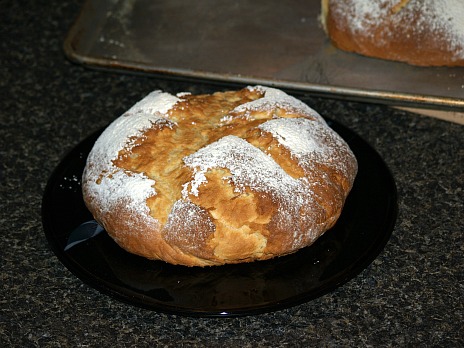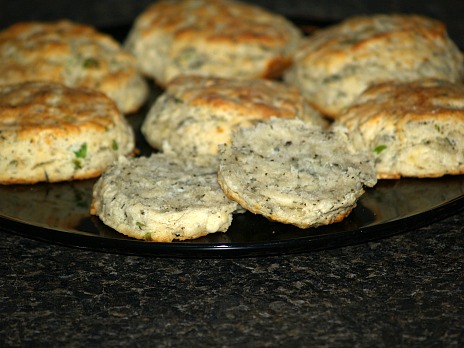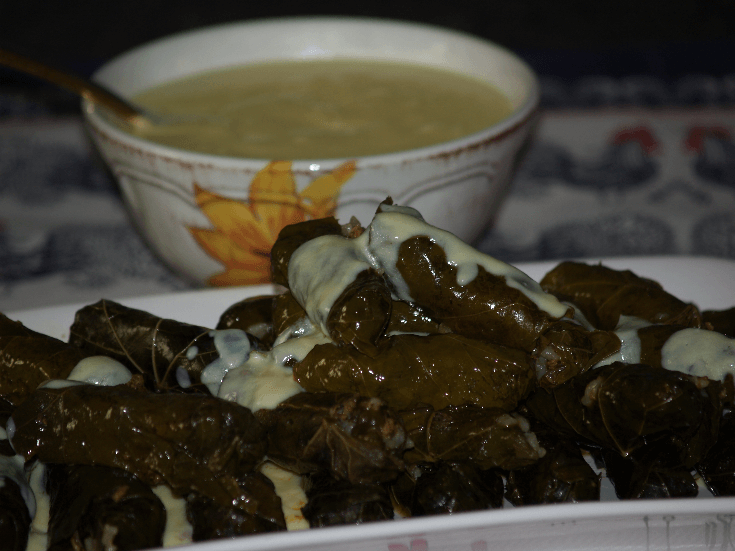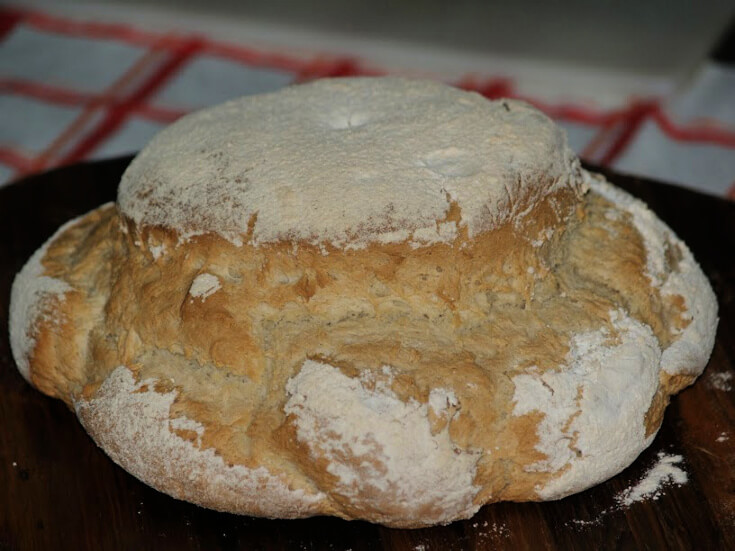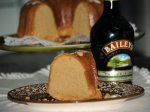- Painless Cooking
- Bread
- How to Knead Dough
Using the Kneading Dough Technique
Kneading dough is a technique used in most of the recipes for yeast breads. As soon as the flour is moistened gluten begins to form. This technique thoroughly mixes the flour and the liquid. It helps to distribute the yeast evenly and helps with the development of the gluten.
What is gluten? Why is it necessary for kneading dough to develop it? Gluten is a protein found in the flour which is used. It comes from the wheat and certain other grains used to make the flour. The gluten helps the yeast to rise and it also helps to give that elastic feel when kneading. Without the development of this gluten, you would not enjoy that great texture in the bread.
POLISH POTATO BREAD RECIPE video kneading dough above
- 1 Cup milk
- ¼ Cup butter
- 1/3 Cup sugar
- 1 Cup mashed potatoes (no seasoning
- 6 Cups flour
- 2 Beaten eggs
- 2 Package active dry yeast
- ½ Cup warm water (110F to 112F degrees)
- 1 Teaspoon salt
- 2 Tablespoons flour
Scald milk; add butter sugar and mashed potatoes.
Add 1 cup flour and stir in; add eggs and mix well.
Dissolve yeast in warm water; add to egg potato mixture and mix well.
Cover and let rest until mixture bubbles about 1 ½ hours; stir down.
Add enough of the remaining flour to form a stiff dough.
Turn dough out onto a floured surface: knead until dough is smooth and elastic about 10 minutes.
Place in a greased bowl; cover and let rise until double in bulk.
Punch down and shape into two round loaves; place on a large greased baking sheet.
Cover and let rise until double in bulk; dust top of each loaf with 1 tablespoon sifted flour.
With a sharp knife cut an “X” design on the top of each loaf.
Bake in preheated oven at 375F degrees for 30 to 40 minutes or until loaves are evenly browned.
The kneading dough technique is used to stretch the gluten making a network which will hold the gas formed while the dough is rising. If the dough is not kneaded sufficiently, part of the gas may escape making the bread heavy. If kneaded too long or too vigorously the dough will become too difficult to handle and shape; again the bread will be too heavy.
HONEY OAT AND WHEAT BREAD RECIPE
- 2 Cups milk
- 1 Cup plus 2 tablespoons old fashioned rolled oats divided
- ½ Cup warm water
- 2 Packages (4 ounces each) active dry yeast
- ½ Cup honey
- ¼ Cup butter
- 3 Cups whole wheat flour
- 2 Cups all purpose flour
- 1 Tablespoon salt
- Vegetable oil
- 1 Large egg
- 1 Tablespoon water
Melt butter and set aside; combine and beat lightly egg and 1 tablespoon water and set aside.
Heat milk in a large saucepan over low heat until warm; stir in 1 cup of oats.
Remove oats from heat and let stand uncovered until cool stirring occasionally.
Add warm water, yeast, honey and melted butter to oats; mix well.
Add whole wheat flour, all purpose flour and salt to oat mixture stirring until a soft dough forms.
Turn dough out onto a well floured surface; knead about 10 minutes.
Shape into a ball and place in a large oiled bowl turning to oil top.
Cover and let rise until double in bulk; punch down and divide into 2 equal parts.
Shape into loaves and place in well greased loaf pans; light brush tops with egg water wash.
Sprinkle tops with 2 tablespoons oats; let rise in warm place until double.
Bake at 375F degrees for about 30 minutes until bread is golden brown; cool before cutting.
The motion of the kneading dough technique consists of folding the dough back on itself and pushing it lightly with the palms of the hands. This is repeated with a rhythmic motion until the surface of the dough feels smooth and satiny. This is a very easy technique to learn and you will learn to feel that elastic snap when the dough is ready.
Other recipes may instruct you to use the kneading dough technique. Homemade noodles, cookies, dumplings and biscuits are some that you may also need to knead. These all require a very different type of kneading and usually for a much shorter time period.
When I make egg noodles, my purpose is to get the dough dry with the flour but still smooth. I want the dough pliable enough to roll but I want it dry enough that I can slice the noodles after rolling. I am sure you have all made cookies at some time. These recipes generally instruct you simply to blend all the ingredients.
The kneading dough technique for rolled dumplings and rolled biscuits are pretty much the same. These require very little kneading time; about 30 to 40 seconds. Too much kneading will make these recipes tough and biscuits which are lopsided. The kneading helps produce good volume, a fine flaky texture, a good shape and crust.
HERB CHEESE BISCUITS RECIPE
- 1 Package (3 ½ ounces) Roquefort cheese crumbled
- 2 Tablespoons minced green onion tops
- 1 Teaspoon dried basil
- ½ Teaspoon dried thyme
- 2 Cups flour
- 1 Tablespoon baking powder
- ¼ Teaspoon baking soda
- ½ Teaspoon salt
- ¼ Cup plus 2 tablespoons butter cut into small pieces
- ¾ Cup buttermilk
Combine first 4 ingredients in a small bowl.
Combine flour, baking powder, soda and salt in a medium bowl.
Cut in cheese mixture and butter with pastry blender until mixture is crumbly.
Add buttermilk stirring just until dry ingredients are moistened.
Turn dough out onto a lightly floured surface; knead briefly about 4 or 5 times.
Roll dough to ½ inch thickness and cut with a biscuit cutter.
Place on lightly greased baking sheets.
Bake in preheated oven at 450F degrees for 8 minutes or until golden brown.
HOW TO MAKE DUMPLINGS?
Use a short kneading dough technique only to blend the ingredients in this potato dumpling recipe.
- 3 Pounds potatoes
- 2 ½ Teaspoons salt
- Dash of pepper
- 2 Eggs
- 1 Cup flour
- ½ Cup dry bread crumbs
- ¼ Teaspoon nutmeg
- ¼ Cup chopped parsley
Cook unpeeled potatoes in boiling water just until tender; drain, cool slightly and peel.
Put potatoes through a ricer; spread on paper towels and dry well.
Place potatoes in a large bowl; lightly toss with 2 ½ teaspoons salt and dash pepper.
Make a well in the center and break eggs in well; sift ¾ cup of flour over eggs.
Add bread crumbs, parsley and nutmeg to the potato mixture.
Mix ingredients and turn out onto a lightly flour board; knead until smooth and holds together.
Shape into 18 egg size balls; roll into remaining ¼ cup flour.
Bring to a boil about 2 quarts of lightly salted water in a large saucepan; reduce heat a little.
Start dropping balls into the water one at a time; do not crowd pan.
Boil gently uncovered about 2 minutes; when they rise to the surface remove with slotted spoon.
When all have been cooked, serve hot with sauerbraten or as a side to meat or poultry.
